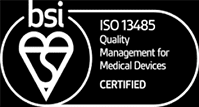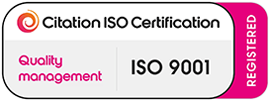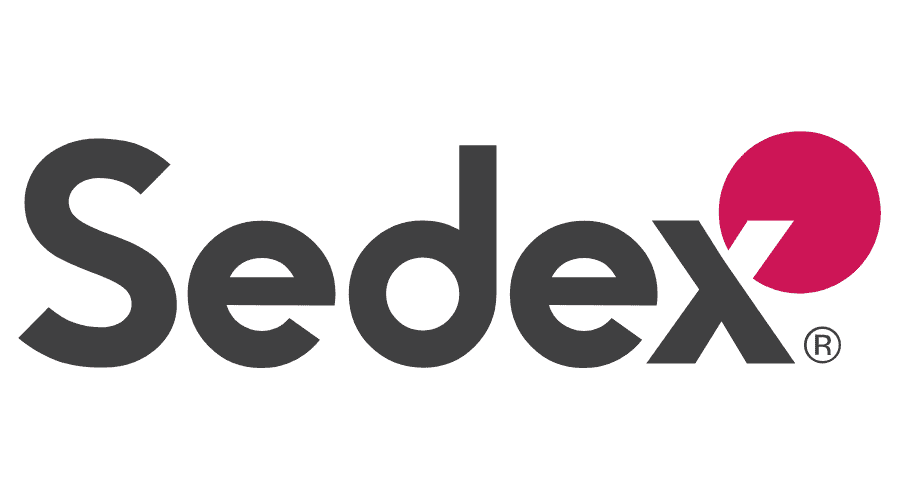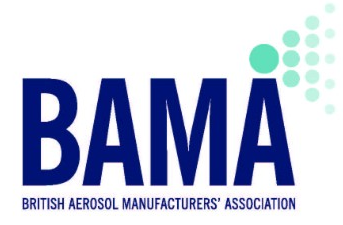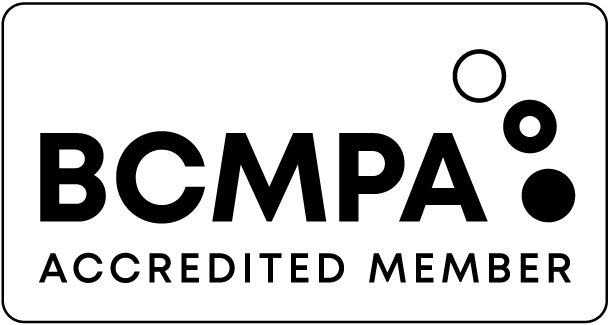In the healthcare and pharmaceutical industry, patient safety and product reliability come first. When it comes to aerosol-based products such as wound sprays, disinfectant aerosols, skin preparation sprays and other medical applications, strict quality standards are essential. That is why working with an ISO 13485 certified aerosol filler matters.
Hydrokem is a trusted partner in medical-grade aerosol manufacturing, offering end-to-end filling services that comply with ISO 13485 standards. From cleanroom environments and validated filling processes to full product traceability and regulatory alignment, our capabilities give healthcare brands the confidence they need to launch safe, compliant and globally accepted products.
What is ISO 13485?
ISO 13485 is the internationally recognised standard for quality management systems (QMS) specifically designed for medical devices. While ISO 9001 applies broadly across industries, ISO 13485 goes further by focusing on the safety and performance of medical products. It covers risk management, traceability, documentation and regulatory requirements to ensure that every product manufactured under this standard meets the highest level of quality and safety.
For aerosol products used in healthcare — from antiseptic sprays to inhalation aids — this certification is more than a quality badge; it is proof of regulatory compliance. Many authorities, including the UK MHRA, EU MDR and US FDA, either require or strongly prefer ISO 13485 certification when approving medical devices. By choosing an aerosol filler with this certification, manufacturers reduce the risk of non-compliance, avoid costly recalls and gain faster access to international markets.
Why Choose an ISO 13485 Certified Aerosol Filler?
Partnering with an ISO 13485 certified filler offers a range of benefits that directly impact both patient safety and business outcomes:
- Regulatory Confidence – ISO 13485 is recognised globally, aligning with UKCA, CE and FDA approvals.
- Patient Safety – Processes are designed to identify, control and mitigate risks associated with medical aerosols.
- Product Traceability – Every batch can be tracked, ensuring accountability and supporting recall management if required.
- Supply Chain Reliability – Clients can demonstrate to regulators and healthcare providers that their products are manufactured under internationally accepted quality standards.
- Reduced Time to Market – With compliance built-in, product launches and approvals become smoother and quicker.
Hydrokem’s ISO 13485 Aerosol Filling Capabilities
At Hydrokem, we combine decades of aerosol expertise with the strict requirements of ISO 13485. Our facilities are equipped for the manufacture and filling of medical-grade aerosols, ensuring that products are safe, sterile and compliant.
Our services include:
- Healthcare Aerosols – wound care sprays, antiseptic aerosols, disinfectants, first aid sprays.
- Bag-on-Valve (BOV) Technology – advanced filling method for sterile products, ensuring separation of product and propellant.
- Cleanroom Manufacturing – controlled environments that meet hygiene standards.
- Validation & Documentation – complete records for every production batch, supporting audits and regulatory submissions.
- Scalable Production – from small pilot runs to full-scale global distribution.
By adhering to ISO 13485 standards, Hydrokem helps clients develop medical aerosols that inspire confidence in regulators, healthcare professionals and patients alike.
Benefits for Clients
Working with Hydrokem as your ISO 13485 certified aerosol filler delivers clear business advantages:
- Faster approval in regulated markets.
- Stronger reputation with healthcare providers.
- Lower compliance risks and fewer delays.
- Flexible batch sizes tailored to your needs.
- Assurance of consistent quality and safety.
Hydrokem is proud to be a trusted ISO 13485 certified aerosol filler serving healthcare and pharmaceutical companies worldwide. If you are developing a medical-grade aerosol and want complete confidence in its safety, compliance and performance, partner with us today.
Contact Hydrokem now to discuss your project and learn how we can support your journey from concept to compliant product.
FAQs about Medical Device manufacturing
What does ISO 13485 mean for aerosol fillers?
ISO 13485 certification for aerosol fillers means that the manufacturer is following a globally recognised standard designed specifically for medical devices and healthcare products. Unlike general quality management systems, this standard focuses on patient safety, risk management, and regulatory compliance. For an aerosol filler, it demonstrates that every step of production — from the sourcing of raw materials to the filling, sealing, testing and release of the final spray — is carried out under strict controls. For healthcare companies, this translates into confidence that their medical aerosols are being manufactured to meet international regulatory expectations.
To understand why this matters, it is important to look at what ISO 13485 represents. It is not simply a badge of quality; it is a detailed framework that sets requirements for how manufacturers design, implement, and maintain systems to ensure consistent product safety. The standard covers documentation, validation of processes, cleanroom operations, corrective and preventive actions, and traceability. In practical terms, this means that an ISO 13485 certified aerosol filler must keep detailed records of every batch, validate its filling lines, and continuously review its processes to identify risks before they reach the market.
For aerosol products used in healthcare — such as wound sprays, disinfectant aerosols, inhalation aids or sterile skin preparation sprays — this level of oversight is crucial. These products come into direct contact with patients, often in vulnerable medical settings, where any defect or contamination could have serious consequences. By working with an ISO 13485 filler, healthcare brands know that their products are being produced in an environment that prioritises patient safety above all else. It also assures regulators such as the UK Medicines and Healthcare products Regulatory Agency (MHRA), the European Union under the Medical Device Regulation (MDR), and the United States Food and Drug Administration (FDA) that the product is manufactured under a compliant quality system.
Another important element of ISO 13485 is risk management. Aerosol fillers with this certification must not only follow good manufacturing practices but also carry out systematic assessments of potential hazards. For instance, they must evaluate the risk of contamination during filling, the reliability of propellants and valves, or the integrity of packaging over the product’s shelf life. Any identified risks must be controlled through preventive measures and continuously monitored. This ensures that medical aerosols meet not just quality standards on paper, but real-world safety requirements that directly protect patients.
Traceability is equally critical. Under ISO 13485, every aerosol batch must have a documented history — from the suppliers of raw materials, to the personnel who operated the filling line, to the specific equipment used. If an issue arises in the field, the manufacturer can quickly trace back the problem and take corrective actions, including recalling affected products. This protects patients from harm and reassures regulators that the company is accountable and prepared to manage unforeseen issues.
From a business perspective, ISO 13485 certification provides healthcare brands with tangible benefits. It reduces the risk of product recalls, shortens the time needed to secure regulatory approvals, and enables smoother entry into international markets. Many countries either require or strongly prefer ISO 13485 certification for medical products, so choosing a certified filler can prevent costly delays and simplify compliance. It also enhances reputation: hospitals, clinics and distributors are more likely to trust products manufactured under a recognised standard.
In essence, ISO 13485 for aerosol fillers is not just about meeting a regulatory requirement. It is about building trust with regulators, healthcare professionals and patients. It demonstrates that the filler has invested in systems, facilities and expertise to ensure that every aerosol produced is safe, reliable and compliant. For healthcare companies, partnering with an ISO 13485 certified aerosol filler like Hydrokem provides the peace of mind that their products are ready to meet the highest standards of global healthcare markets.
How does ISO 13485 ensure product safety in medical aerosols?
ISO 13485 ensures product safety in medical aerosols by enforcing strict quality management systems that cover every stage of production, from sourcing raw materials to distributing the final spray. It is a framework that reduces risks, guarantees traceability, and ensures that products are safe, effective, and compliant with international healthcare regulations. For patients and healthcare providers, this means confidence that the aerosols they use are manufactured under the highest safety standards.
Safety begins with risk management. Under ISO 13485, manufacturers must systematically identify and evaluate risks throughout the lifecycle of a product. In the case of medical aerosols, this includes assessing the purity of raw materials, the reliability of valves and propellants, the potential for contamination during filling, and the integrity of packaging. Every potential hazard must be analysed, and preventive measures put in place. This proactive approach ensures that safety concerns are addressed long before a product reaches patients.
Another vital element is process validation. Medical aerosols must be manufactured under controlled and repeatable conditions. ISO 13485 requires that all critical processes — such as filling, sealing, and sterilisation — are validated to confirm they consistently produce products that meet specifications. For example, if an aerosol is designed as a wound spray, the filler must prove through testing and documentation that the filling process will not compromise sterility or introduce contaminants. These validations are regularly reviewed and updated to reflect technological changes or new risks.
Cleanroom operations are also a major part of ISO 13485 compliance. Many healthcare aerosols, such as antiseptic sprays or respiratory aids, require sterile environments. Under the standard, fillers must maintain cleanroom facilities that meet hygiene requirements. This involves controlling air quality, temperature, humidity, and ensuring that staff follow strict hygiene practices. By doing so, the chance of introducing harmful microorganisms or particles into medical aerosols is significantly reduced.
Traceability is another cornerstone of ISO 13485. Every product manufactured must have a documented record that traces back to its origins. This includes information about raw material suppliers, production conditions, equipment calibration, and the staff involved. Should a problem occur, manufacturers can quickly identify which batches are affected and take corrective action, including targeted recalls. This rapid response mechanism not only protects patients but also shows regulators that the company is accountable and reliable.
Furthermore, ISO 13485 enforces continuous improvement through audits and corrective actions. Manufacturers are regularly audited to ensure compliance, and any issues found must be addressed with documented solutions. This creates a cycle of improvement where safety systems become stronger over time, ensuring that medical aerosols consistently meet evolving healthcare expectations.
For patients, the benefit is clear: they can use healthcare aerosols with trust that the product has been designed and manufactured under a safety-first framework. For healthcare companies, working with an ISO 13485 certified aerosol filler reduces regulatory risk, protects brand reputation, and ensures smoother entry into global markets. Ultimately, ISO 13485 transforms safety from being just a regulatory checkbox into a culture embedded in every stage of medical aerosol production.
Is ISO 13485 required for exporting healthcare aerosols internationally?
ISO 13485 is not always legally mandatory in every country, but in most regulated markets it is either required or strongly preferred for exporting healthcare aerosols. It serves as recognised proof that the products are manufactured under a quality system designed for medical-grade safety and compliance, making it far easier to gain approval in the UK, EU, US, and beyond.
When companies attempt to export medical aerosols, one of the main challenges is satisfying the regulatory authorities of each target country. In the United Kingdom, the Medicines and Healthcare products Regulatory Agency (MHRA) expects manufacturers of medical aerosols to demonstrate compliance with quality management systems aligned with international standards. In the European Union, ISO 13485 is closely linked to CE marking under the Medical Device Regulation (MDR). Without it, obtaining CE certification can become a lengthy, complex, and expensive process. In the United States, the Food and Drug Administration (FDA) recognises ISO 13485 as a framework for meeting Quality System Regulations, making it a valuable certification for entering the US market.
Beyond these major markets, many countries in Asia, the Middle East, and South America also recognise ISO 13485 as a key indicator of compliance. Even in regions where it is not legally mandated, distributors, healthcare providers, and import authorities often look for ISO 13485 certification as a measure of credibility. Without it, products may face additional scrutiny, delays at customs, or outright rejection from buyers who only want to stock products made to medical-grade standards.
Working with an ISO 13485 certified aerosol filler therefore provides exporters with significant advantages. It reduces the likelihood of rejections, accelerates time-to-market, and assures potential partners that the products are manufactured under internationally recognised systems. For companies without the certification, the alternative often involves additional audits, regulatory inspections, or costly third-party verifications, all of which slow down the process and increase costs.
It is also important to note that ISO 13485 simplifies global expansion. For example, a healthcare brand that first launches its aerosol in the UK can more easily expand into the EU or US if the product is already manufactured by an ISO 13485 certified filler. The certification acts like a “passport” for international trade, recognised across borders, and minimising regulatory friction.
In conclusion, while ISO 13485 may not be written into law in every country, it has become the international benchmark for exporting healthcare aerosols. Without it, manufacturers risk delays, higher costs, and lost opportunities. With it, they gain credibility, smoother approvals, and greater confidence from global partners. For healthcare companies planning international expansion, choosing an ISO 13485 aerosol filler is not just a smart decision — it is often the deciding factor between success and failure in new markets.
What types of products can Hydrokem manufacture under ISO 13485 standards?
Hydrokem can manufacture a broad range of healthcare aerosols under ISO 13485 standards, each designed to meet strict safety, compliance, and performance requirements. These products are intended for use in clinical environments, hospitals, pharmacies, and direct patient care, making quality management and reliability essential.
One major category is wound care aerosols, including antiseptic sprays that help prevent infection, healing sprays that accelerate recovery, and protective aerosols designed to form a barrier over wounds. These products must be sterile, easy to apply, and consistent in delivery. ISO 13485 ensures that Hydrokem’s production processes are validated and controlled so that every spray meets these requirements.
Another key area is disinfectant aerosols. Hospitals, clinics, and care homes rely on surface disinfectant sprays to maintain hygiene and prevent the spread of infections. Under ISO 13485, Hydrokem ensures that these products are manufactured under validated conditions with complete traceability, making them suitable for use in highly regulated healthcare environments.
Hydrokem also produces skin preparation aerosols, which are vital before surgical procedures or wound dressing. These sprays often require sterile filling and bag-on-valve technology to ensure that the product remains uncontaminated throughout its shelf life. By adhering to ISO 13485, Hydrokem guarantees that the production environment meets the necessary standards to protect patient safety.
Pain relief aerosols are another example, providing topical relief for injuries, strains, or medical conditions. These sprays need reliable delivery systems and carefully controlled formulations, all of which are managed under ISO 13485’s strict quality framework.
Inhalation support products can also fall within Hydrokem’s capabilities, requiring the highest levels of precision and safety due to their direct contact with the respiratory system. These products often demand sterile filling processes and rigorous validation to meet international regulations.
A distinctive strength of Hydrokem lies in bag-on-valve (BOV) aerosols. This advanced filling technology separates the product from the propellant, making it particularly suitable for sensitive or sterile medical applications. It allows consistent dosing, maintains product integrity, and extends shelf life, which are crucial benefits in healthcare.
Every one of these products benefits from Hydrokem’s ISO 13485 certification, which ensures cleanroom operations, risk management, traceability, and complete documentation. This means that clients not only receive reliable products but also the regulatory support needed for submissions and approvals. Whether it is small pilot runs or large-scale production, Hydrokem offers flexibility while maintaining the highest quality.
For healthcare brands, partnering with Hydrokem means gaining access to a trusted filler that can deliver compliant, safe, and effective aerosols across multiple product categories. This makes the company a valuable partner for both established pharmaceutical firms and innovative healthcare startups aiming to enter global markets.
How does ISO 13485 differ from ISO 9001 in aerosol filling?
The key difference between ISO 13485 and ISO 9001 in aerosol filling is their scope. ISO 9001 is a general quality management standard applicable across all industries, while ISO 13485 is tailored specifically to medical devices, making it much stricter and more detailed for healthcare aerosols.
ISO 9001 provides a solid framework for managing quality, customer satisfaction, and continuous improvement. It helps companies demonstrate that they can consistently deliver products and services that meet customer and regulatory requirements. Many aerosol fillers certified to ISO 9001 are perfectly capable of producing high-quality consumer products, such as household or personal care aerosols. However, ISO 9001 does not directly address the unique risks associated with medical devices and aerosols intended for patient care.
By contrast, ISO 13485 takes the principles of ISO 9001 and expands them to meet the stringent needs of the healthcare industry. It places much greater emphasis on patient safety, risk management, sterile environments, and traceability. For example, under ISO 13485, a filler must validate critical processes such as filling and sealing, maintain cleanroom facilities when required, and document every production step. This ensures that healthcare aerosols — whether wound sprays, antiseptic products, or respiratory aids — are produced under conditions that minimise risks to patients.
Another important distinction is regulatory alignment. ISO 9001 is respected worldwide, but it is not designed to meet specific healthcare regulations. ISO 13485, on the other hand, is directly aligned with requirements from regulators such as the MHRA, EU MDR, and FDA. This makes it the certification of choice for companies seeking to launch medical aerosols globally. Without it, manufacturers may face additional inspections, delays in approval, and higher compliance costs.
For healthcare companies, this difference is crucial. Choosing an ISO 9001 filler might be acceptable for consumer aerosols, but when products are intended for medical use, ISO 13485 certification is the only way to guarantee compliance with global standards. It reduces risks, builds trust, and supports faster market access.
In short, ISO 9001 demonstrates a general commitment to quality, but ISO 13485 proves a commitment to patient safety and regulatory compliance. For aerosol fillers, the distinction separates those capable of producing standard consumer products from those trusted to deliver life-saving medical aerosols. For this reason, healthcare companies looking to launch safe and compliant aerosols must always partner with an ISO 13485 certified filler.

